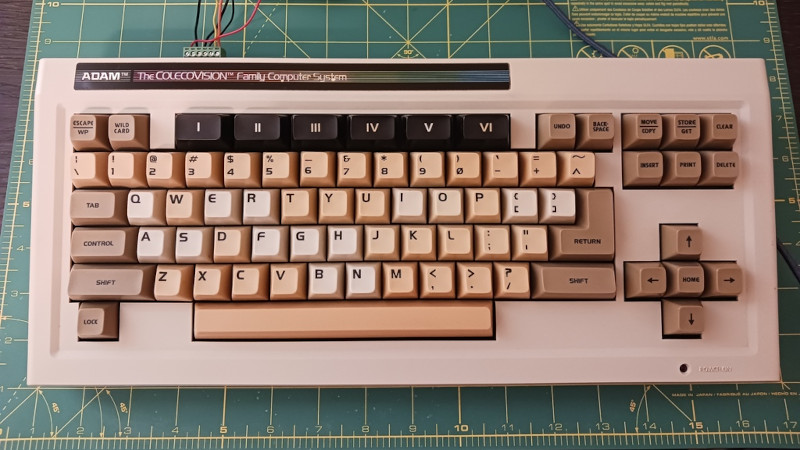The Coleco Adam is one of the great might-have-beens of the 8-bit home computer era, with an impressive bundle and on-paper spec let down by bugs, hardware issues, and poor availability. It’s something of a footnote today but it seems Coleco did get something right as it had a great keyboard. [Nick Bild] has one, and he’s brought it into the 21st century with a USB interface.
The interfacing is courtesy of a Teensy microcontroller board as in so many other keyboard projects, but what makes this extra-interesting is the way the Coleco keyboard speaks to the world. Instead of merely being a matrix peripheral as were so many of its contemporaries, Coleco created their own custom serial bus for Adam desktop peripherals called AdamNet, and thus the keyboard contains its own 6801 microcontroller to perform the interfacing. The Teensy then is a USB-to-AdamNet interface, and could we’re guessing be made to talk to other Coleco peripherals if they exist.
You can see the keyboard in action below the break, and as you can see it fits quite nicely into 2023. We’ve not featured much about the Adam before here at Hackaday, but the ColecoVision console which sits at its heart has even seen a new version.

















A local store had Adam keyboards. I was very tempted to buy one, maybe thirty years ago. But at the time, not sure of the interface.
Maybe you should go back to see if they still have them?
Was it Toronto’s Active Surplus? I remember seeing surplus Adam keyboards (and even earlier entire surplus Adam systems) there in the early-mid 1990s
Wow, that takes me back.
After the Adam was discontinued, Adam keyboards showed up onn the surplus tables in Radio Shacks for something like $10 a pop.
Both the Adam and the TI-99/4a had silicone doome keys, and the TI’s keys had the same layout as the corresponding Adam keys (Adam had more keys the TI lacked). I tore my TI’s keyboard apart and mounted its circuit board in the Adam keyboard with a 6 foot ribbon cable to the TI. A cut off piece of the Adam board, scraped amd soldered to traces got wired in to the TI’s joystick port internally so the arrow keys (which TI lacked) were joystick inputs.
That TI served me for years, and that remains the favorite upgrade I gave it.
Old fuzzy memories are coming into sharper focus as I look at photos of components.
The Adam’s keys had silicone cups with pads in their center, which contacted pads on its flexible printed circuit. The TI’s were mechanical and soldered into its rigid circuit board. I remember being surprised at how simple it was to wire the Adam keyboard to the TI perhaps it was that their two circuit boards simply used the same matrix. I vaguely remember shaping wire contacts to get the arrow keys to work for the joystick as the Adam’s arrow keys were not compatibly wired.
The TI joystick setup ran two joysticks on the same pinout as Atari used for a single joystick with the 2600 and their later computers. TI just sampled the inputs alternating the current direction for which joystick they wanted to read. TI’s joysticks were horrid, but an neasy to build Y adapter cable with diodes to isolate the two inputs opened the TI to a world of great aftermarket joysticks.
Wow guys, get out of Mom’s basement.
It’s 2023.
You’re right, we need to get out heads out of the past